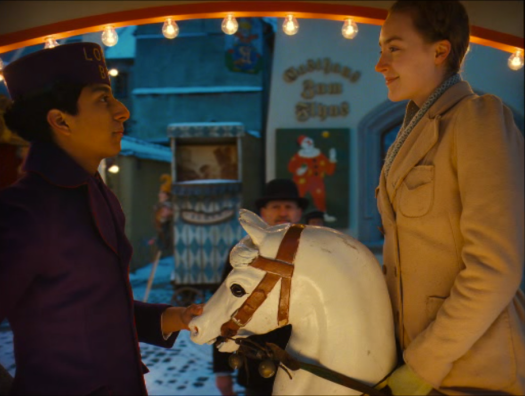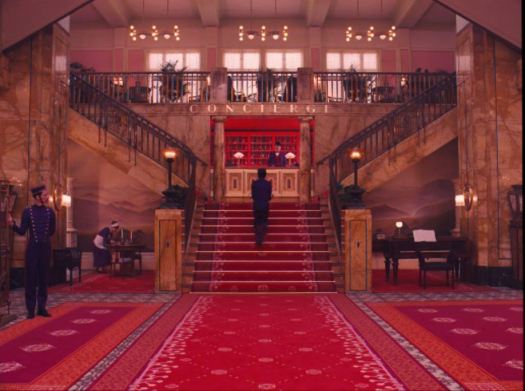Absent for a while, I came back with the most interesting piece of art to critic and comment from my humble point of view.
Wes Anderson‘s control of symmetry never stroke me more than on his last visual exploit that is extremely pleasant for the eye. The Grand Budapest Hotel shows an excruciating sensibility emerging from this ability to direct exact symmetry almost in a “royal” way, with exquisite choice of decor’s and costumes’ colors. It marked me to the extent that I am still writing with a sort of british aristocratic accent in my head.
Apart from the equivalent of caviar for the eye, the movie has a funny structure composed of five parts narrated by F. Murray Abraham playing old Zero Mustafa, the hero, and extras narrated by Tom Wilkinson and Jude Law playing respectively the same old and young writer. Like it suggests, it is divided like a book with different chapters, introductions and one conclusion.
The main action takes place in The Grand Budapest Hotel at different time periods; 1985, 1968, and 1932 in the (former) Republic of Zubrowka, during the interwar period, adding some fireworks to the main story, that is already quite original. Indeed, Mr. Gustave (Ralph Fiennes) the concierge of the hotel has this eccentric habit to be a little too friendly with the over 80 rich ladies coming to the hotel. Therefore, when one of them dies (Madame Céline Villeneuve Desgoffe ind Taxis played by the incredible Tilda Swinton), she left him her most beautiful painting. This creates quite a mess inside the family, headed by her son Dmitri (Adrien Brody), who started a very elegant but paradoxically grotesque blood bath, helped by his dexterous right hand, J.G. Jopling (Willem Dafoe).
The casting is quite impressive at first when looking at the cover of the movie, but each actor – except from Ralph Fiennes (Mr.Gustave) who has a whole chapter to himself, and even the whole “book” if I must say, and Tony Revolori, young Zero – has a little to say, or do. But everyone together brings up an exciting story in the very marginal and yet pedantic universe of Anderson.
Based on Stefan Sweig ‘s numerous novels, the style is recognizable as the basis, but then the director takes over and wraps the whole thing with an outstanding photography, offering a series of shot composed like paintings with a multitude of details for the eye to catch. Meticulous and serious composition, the director surprised me with his light but rich adventure, that I will strongly advise to go on.





